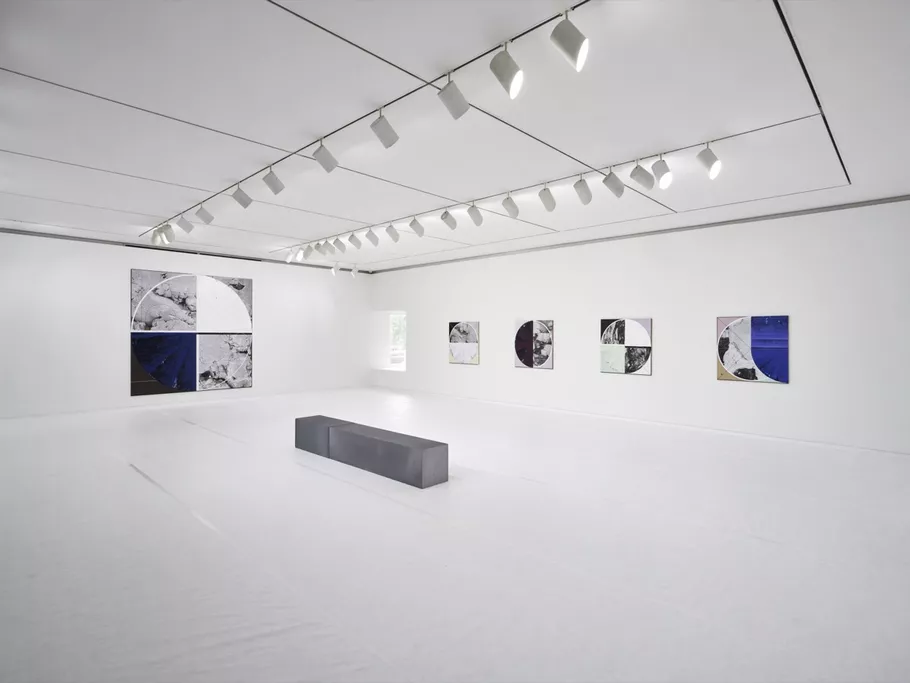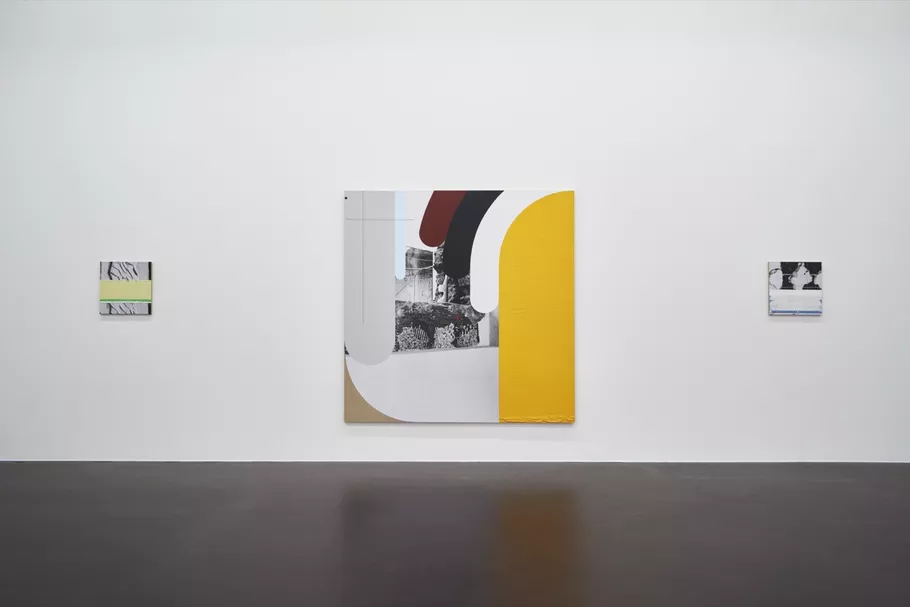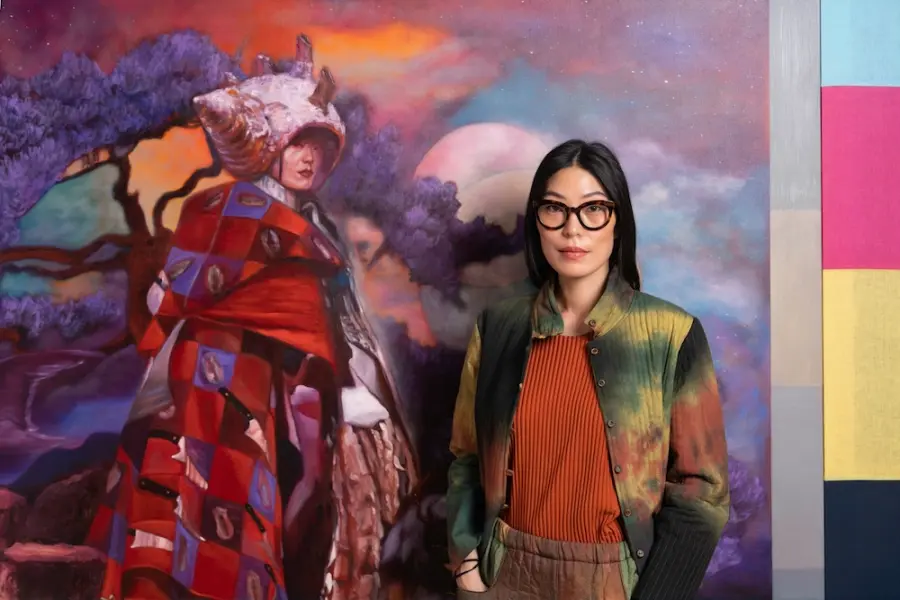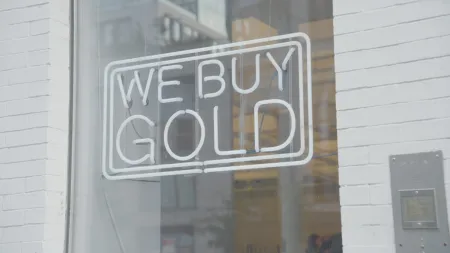Heejoon Lee’s Abstract Paintings: A Multifaceted Encounter with Urban Environments
Heejoon Lee's Abstract Paintings: A Multifaceted Encounter with Urban Environments
- Korean artist Heejoon Lee creates abstract works through urban environments, engaging with viewers to generate fresh meanings.
- His works distill the details of city buildings into geometric abstractions, combining his unique style with dots, lines, and color fields.
- Lee’s art allows viewers to interpret time and narrative, forging personal perspectives and creating a tapestry of shared stories and experiences in various spaces.
-
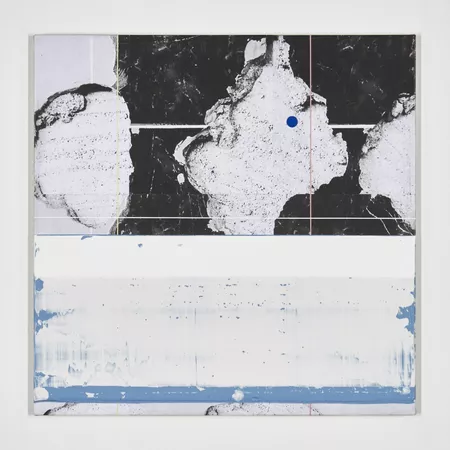
- Heejoon Lee, Space Traveler, 2021. Photo by Euirock Lee. Courtesy of the artist.
-
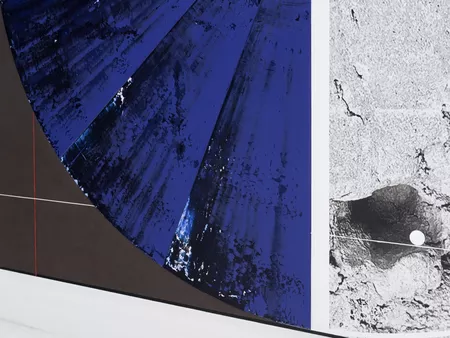
- Heejoon Lee, detail of If You Cut the Clouds With a Knife, 2023. Courtesy of the artist.

n the contemporary art landscape, meaning no longer adheres to a singular interpretation; instead, it serves as a medium for capturing novel insights. Korean artist Heejoon Lee likens his work to a "platform", one that doesn't fixate on a solitary idea but instead immerses viewers in a pictorial realm constructed through experiments that activate their own experiences, memories, and knowledge. Lee's abstract oil paintings and photo collages engage with the audience, generating fresh meanings through these interactions.
Throughout his career, Lee has maintained a keen focus on the urban environment that surrounds him. He adopts the role of a “flaneur”, a term borrowed from Walter Benjamin to describe a perceptive urban explorer. Armed with a cellphone, he roams the city, capturing buildings that later find their way into his artistic thought process. By directing the observer’s gaze from a microscopic standpoint, as if tracing the city’s lifeblood, Lee uncovers new significances within ordinary structures and locales. This practice becomes a means for the artist to grasp the intricacies and dynamism of the city while delving into the dimensions of time and space.
What sets Lee’s reconstructed images apart is his selection of non-monumental building elements. He often zeroes in on the gaps or alleyways between structures. In recent years, he has overlaid paintings onto photographs of building interiors, particularly those resembling a chaotic blend of collapsed and superimposed debris, as seen in “If You Cut Clouds With a Knife” (2023). This distinctly reflects the focal point of his exploration. The artist’s discerning eye for the finer details of buildings, even the textures of interior materials, transcends the context of specific locations, rendering them more universal: spaces.
Lee proceeds to distill the forms, proportions, and colors inherent to these spaces, abstracting them into geometric shapes that interplay with his own expressive style. He employs dots, lines, and color fields on canvas, transforming his sensory impressions of everyday scenery into pictorial tension, as exemplified in “Space Traveler” (2021).
The photos Lee incorporates are informed by his unique perspective on the urban environment. Initially, these served as references, but in more recent works, they have become the foundation for abstracting two-dimensional art. Instead of erasing the original context through image segmentation and reassembly, he introduces depth to his art through bold and thick color applications in interlocking planes, lines, and dots, all adhering to a geometric and logical style. Consequently, his works fragment, enlarge, and rearrange black-and-white photos, disrupting the smooth surface of these digital images.
Moreover, the pixel traces in digital photographs and the tactile sense of glitches imbue viewers with a refreshing perception of space, enhanced by Lee’s geometric painting style and his own pictorial gestures created by brushstrokes. His process of abstraction seemingly erases expected objects from the photos, establishing a stark contrast between the physicality of the painting and the intangibility of the digital image.
In the realm of modernist painting, artists strived to convey the depth and structure of actual space on a canvas through color, form, and lighting. In contemporary art, these principles of abstraction, three-dimensionality, and balance expand the dimensions and depth of a space through interaction with the viewer’s gaze on the canvas. Lee, in this context, likens the layers within his paintings to “scaffolding”, a concept that lent its name to his recent exhibition at the Kumho Museum of Art in Seoul. Similarly, he dubs the three-dimensional structures forged by dismantling and recombining these scaffoldings as “mining”. In his art, Lee challenges the conventional boundaries between interior and exterior, inviting viewers to explore and imbue new interpretations freely.
Lee’s abstract spaces, by actively engaging with the viewer’s perspective, traverse various concepts of space and place. Viewers can let time and narrative emerge through their individual, subjective interpretations, realizing Lee’s aspiration that his images “can generate stories of others”. In this way, Lee fosters an artistic experience where viewers can navigate freely and non-linearly, encouraging them to forge personal paths and perspectives as they engage with his work. Ultimately, this creates a rich tapestry of shared stories and experiences.


